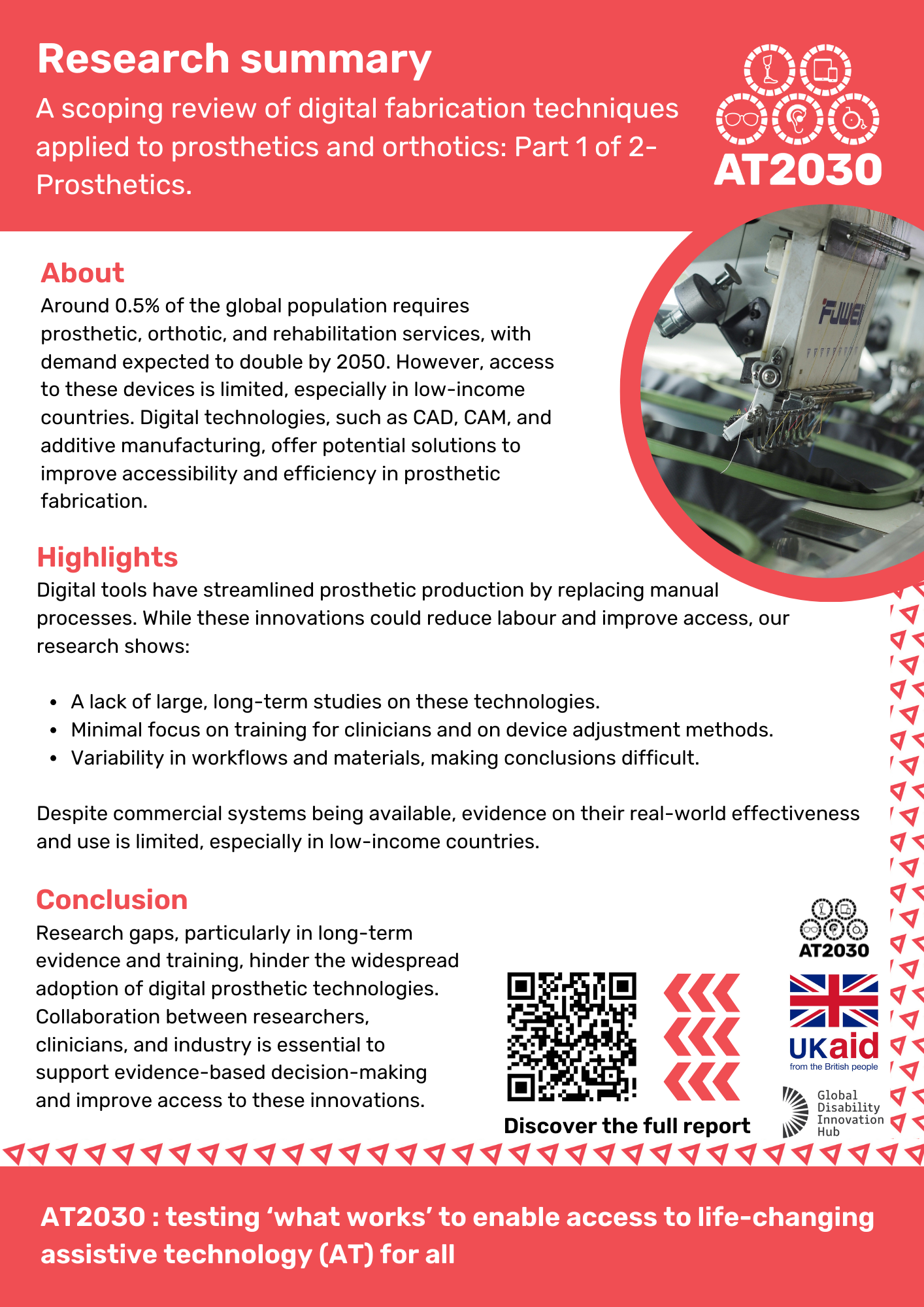A scoping review of digital fabrication techniques applied to prosthetics and orthotics: Part 1 of 2-Prosthetics (Summary)
Introduction
Approximately 0.5% of the global population, or 35-40 million people, require prosthetic, orthotic, and rehabilitation services, a figure projected to double by 2050. Access to these devices remains unequal, especially in low-income countries, where only 11% of those in need receive assistance compared to 64% in high-income regions.
The potential of digital technologies
Digital fabrication technologies, such as CAD, CAM, and additive manufacturing (AM), are seen as promising solutions to increase accessibility and streamline prosthetic production. These methods reduce manual labor and offer the potential for quicker, more cost-effective fabrication.
Research gaps
This review highlights significant gaps in the current research on digital prosthetic fabrication:
- Lack of large-scale studies: few long-term studies exist to validate the effectiveness of digital solutions in real-world settings.
- Training and workflow issues: insufficient research focuses on training and the varied production workflows, making it hard to standardise methods.
- Limited evidence on commercial systems: although they are available, their practical outcomes and impact are not well-documented.
Conclusion
Addressing these gaps through collaboration between researchers, clinicians, and industry is essential for supporting evidence-based decision-making. Improved research and documentation are needed to realise the full potential of digital technologies in global prosthetic care.
